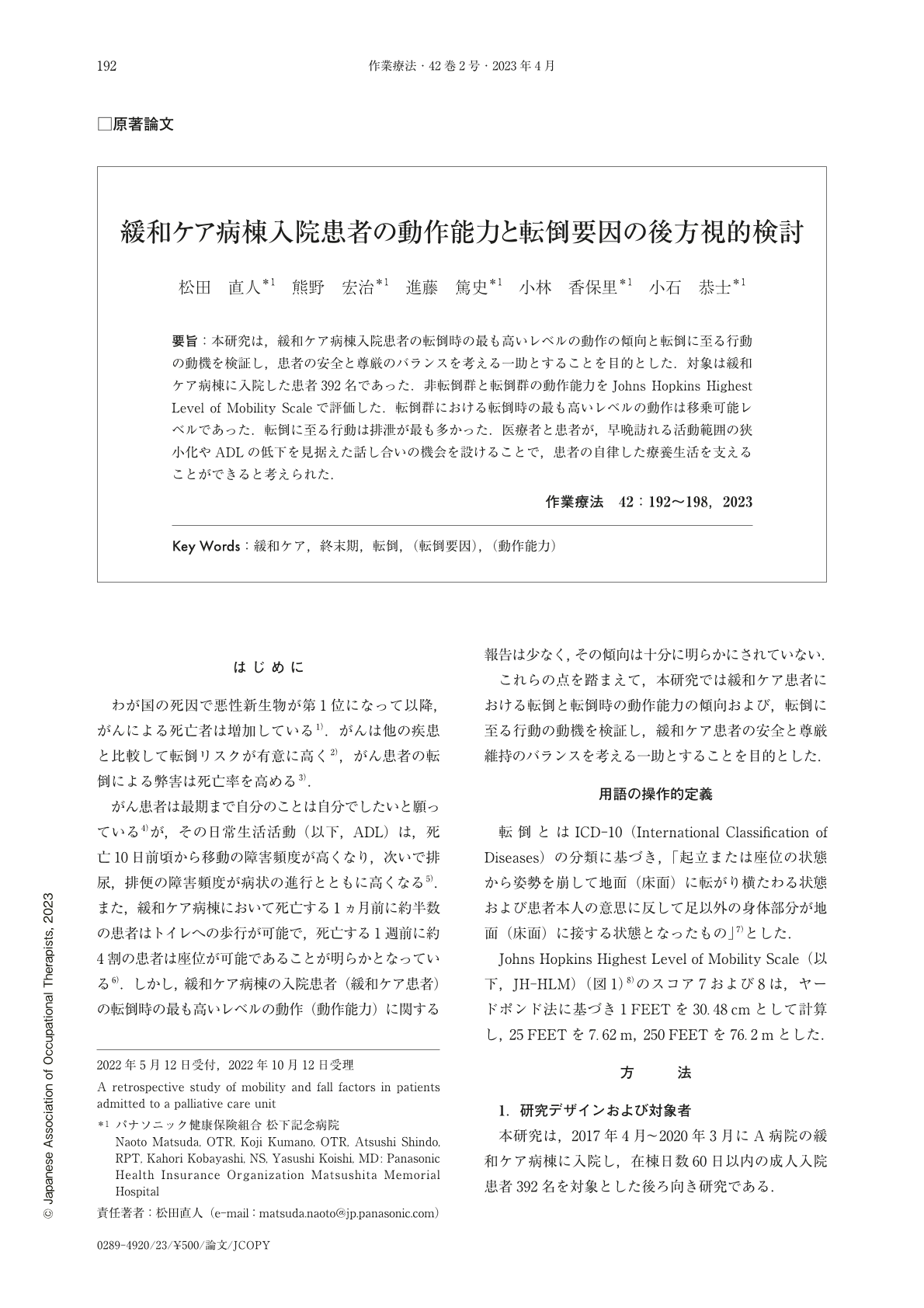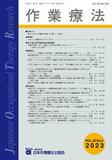Japanese
English
- 販売していません
- Abstract 文献概要
- 1ページ目 Look Inside
- 参考文献 Reference
要旨:本研究は,緩和ケア病棟入院患者の転倒時の最も高いレベルの動作の傾向と転倒に至る行動の動機を検証し,患者の安全と尊厳のバランスを考える一助とすることを目的とした.対象は緩和ケア病棟に入院した患者392名であった.非転倒群と転倒群の動作能力をJohns Hopkins Highest Level of Mobility Scaleで評価した.転倒群における転倒時の最も高いレベルの動作は移乗可能レベルであった.転倒に至る行動は排泄が最も多かった.医療者と患者が,早晩訪れる活動範囲の狭小化やADLの低下を見据えた話し合いの機会を設けることで,患者の自律した療養生活を支えることができると考えられた.
The purpose of this study was to examine trends in the highest level of mobility of patients admitted to a palliative care unit at the time of a fall and the motives for the behavior leading to the fall in order to consider the balance between patient safety and patient dignity. The subjects were 392 patients admitted to a palliative care unit. The mobility of the non-fall group and the fall group was evaluated with the Johns Hopkins Highest Level of Mobility Scale (JH-HLM). The highest level of mobility at the time of the fall in the fall group was the level at which the patient could transfer to a chair. Defecation was the most common behavior leading to falls. By providing opportunities for discussion between medical care providers and patients with a view to eventually narrow the range of activities and decline in ADL, it is possible to support patients' autonomous medical treatment life.

Copyright © 2023, Japanese Association of Occupational Therapists. All rights reserved.


